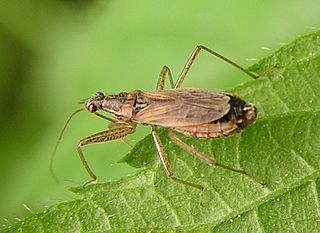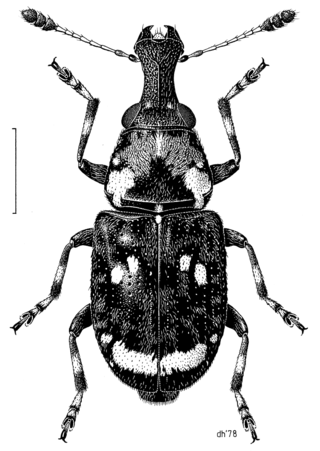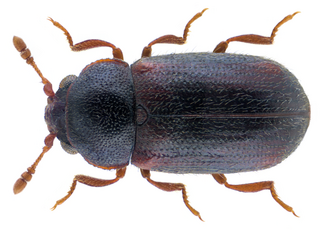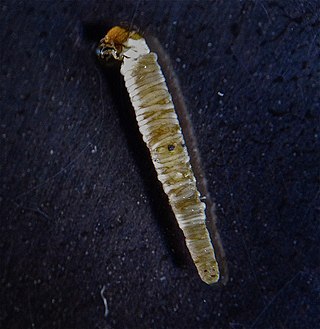
The insect family Nabidae contains the damsel bugs. There are over 500 species in 20 genera. They are soft-bodied, elongate, winged terrestrial predators. Many damsel bugs catch and hold prey with their forelegs, similar to mantids. They are considered helpful species in agriculture because of their predation on many types of crop pests.

Anthocoridae is a family of bugs, commonly called minute pirate bugs or flower bugs. Worldwide there are 500-600 species.

Cryptophagidae is a family of beetles with representatives found in all biogeographic realms. Members of this family are commonly called silken fungus beetles and both adults and larvae appear to feed exclusively on fungi although in a wide variety of habitats and situations, such as rotting wood and shed animal fur and feathers. These beetles vary from about 1 to 11 millimeters long, and usually have an oval body shape with a slight "waist".

Anthribidae is a family of beetles also known as fungus weevils. The antennae are not elbowed, may occasionally be longer than the body and thread-like, and can be the longest of any members of Curculionoidea. As in the Nemonychidae, the labrum appears as a separate segment to the clypeus, and the maxillary palps are long and projecting.

Myopsocidae is a family of mouse-like barklice, belonging to the infraorder Psocetae of the order Psocodea. This family is closely related to Psocidae, with which it shares similar wing-venation, but from which it is distinguished by three-segmented tarsi.

Clivina is a genus of ground beetle native to the Palearctic, the Nearctic, the Near East and North Africa. There are more than 600 described species in Clivina.

Sphindidae is a family of beetles, in the suborder Polyphaga. They are called slime mold beetles due to their exclusive feeding on slime molds during adult and larval stages, other aspects of their life history are obscure. Palaeontological discoveries since 2015 have added to the geologic history of Sphindidae, including the discovery of Libanopsis, placed in the extinct subfamily Libanopsinae.

The Taiwanese brown-toothed shrew is a species of shrew in the tribe Nectogalini. It is found only in Taiwan. It prefers dense ground cover in forests and subalpine shrublands in high mountains of central Taiwan. Its placement in Episoriculus has been questioned, with genetic analysis finding that it is more basal within Nectogalini than other members of Episoriculus.

Lixus is a genus of true weevils in the beetle family Curculionidae, raised by the Danish entomologist, Johan Christian Fabricius in 1775. There are at least 950 described species in Lixus.

Trachyderini is a tribe of long-horned beetles in the family Cerambycidae. There are at least 140 genera and 650 described species in Trachyderini.

Periscelididae is a family of flies.
Zodarion morosum is a spider species found in Bulgaria, Greece, Turkey, Ukraine and Russia.
Carenum morosum is a species of ground beetle in the subfamily Scaritinae. It was described by Sloane in 1907.
Eodorcadion dorcas is a species of beetle in the family Cerambycidae. It was described by Jakovlev in 1901 and is known from Mongolia.

Valenzuela is a genus of psocoptera in the family Caeciliusidae, the lizard barklice. Some species are extinct and date to the Eocene of Poland or Russia. There are at least 300 described species in Valenzuela.

Micrasema is a genus of humpless casemaker caddisflies in the family Brachycentridae. There are more than 70 described species in Micrasema.
Microstylum galactodes is a species of robber flies in the family Asilidae.

Pison morosum is a solitary wasp of the family Crabronidae. It is the only endemic species of Pison wasp to New Zealand. It was first described by entomologist Frederick Smith in 1858.
Pison marginatum is a wasp of the family Crabronidae. It is found in Australia, South East Asia and many of the islands of the Pacific Ocean.















